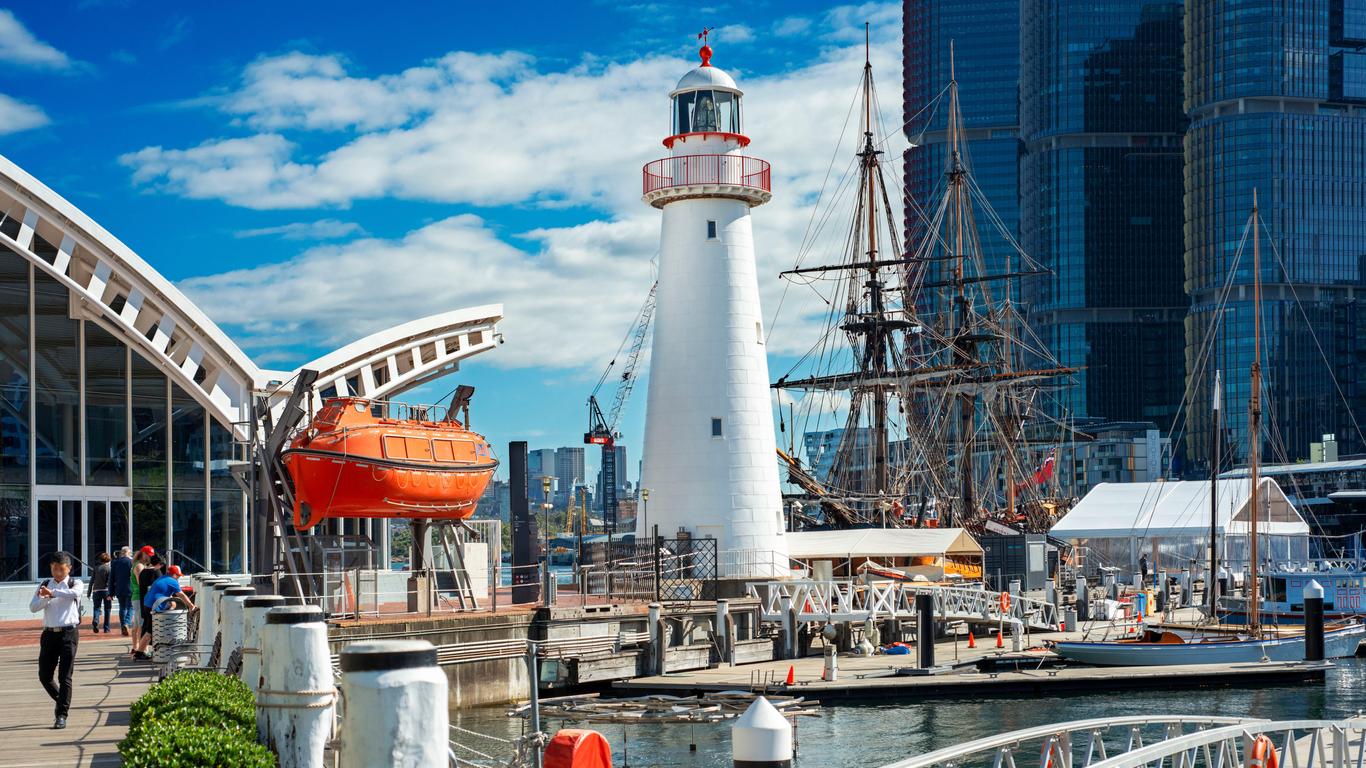Darling Harbour is one of the most energetic and happening areas in all of Sydney. Located just to the west of the CBD, it has a prime location on Cockle Bay, looking across at King Street Wharf and the Sydney aquarium. Bursting with everything from high-street shopping to museums, it’s a multifaceted, family-friendly entertainment area.
Running from Chinatown to the waterside, the neighborhood offers a diverse range of things to do and see. The Harbourside Shopping Centre is one of the main attractions. Home to high-street emporiums and food courts, it offers late-night retail therapy right throughout the week. Nearby is the Sydney IMAX, home to the largest cinema screen in the world. Further south and travelers will find one of the city’s newest entertainment complexes: The Darling Quarter. Here, gourmet sandwich joints meet Thai eateries, children’s’ playgrounds mix with water fountains, and Brazilian restaurants stand next to artisan coffee shops. Further south again is the Chinese Garden of Friendship, compete with babbling waterfalls, pretty orchids and Oriental teahouses. In the evening, crowds flock to watch the regular fireworks shows on weekend nights, while a clutch of nightlife options line the streets all around the wharf. There are oodles of museums and exhibitions too. Darling is home to Madame Tussauds, the botanic gardens and greenhouses of Wild Life Sydney, the Sydney Aquarium, and the steam engines and locomotives of the Powerhouse Museum to boot.
Darling Harbour can be easily accessed by foot from the Sydney CDB. Visitors coming in from the rest of the city can take a ferry directly to the King Street Wharf from Circular Quay, a train to Paddy's Market, or a bus to one of the many stops along Market Street. A cycle track offers easy access along Pyrmont Bridge. Darling Harbour also has a number of paid car parking spaces.
Named after Lieutenant-General Ralph Darling, the onetime governor of New South Wales, the area now known as Darling Harbour was once a part of Sydney’s commercial shipping port. Much of it was taken up by the Railway Goods Yard. It was known for its industrial sprawl until it was earmarked for reconstruction in the 1980s. In 2000, the Sydney Convention and Exhibition Centre was one of the Olympic venues, and the surrounding shopping centers and attractions gradually became one of the top entertainment districts in the country.





